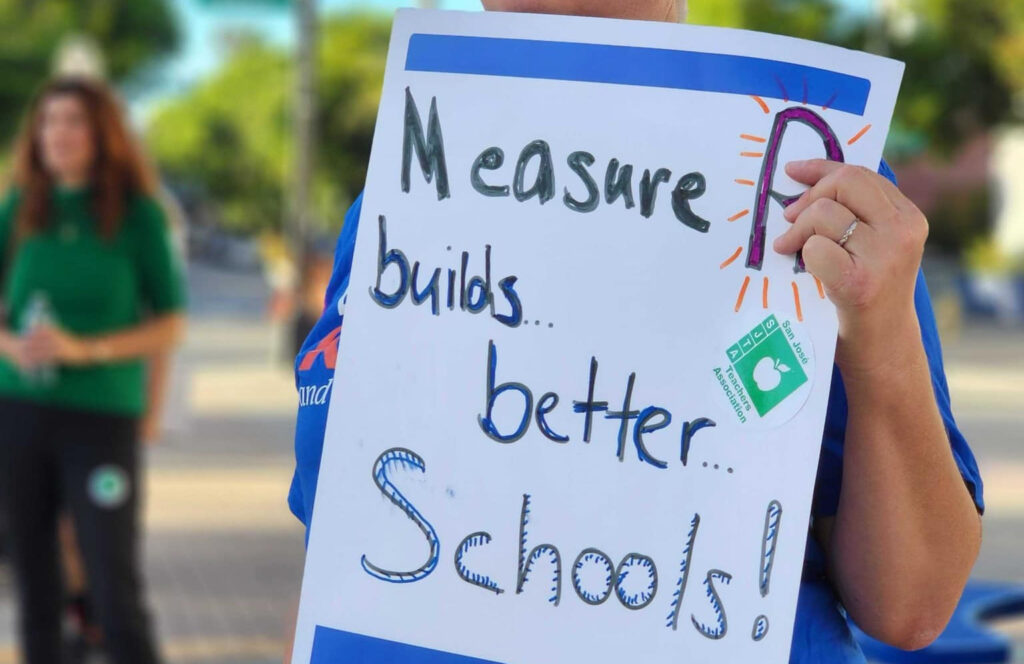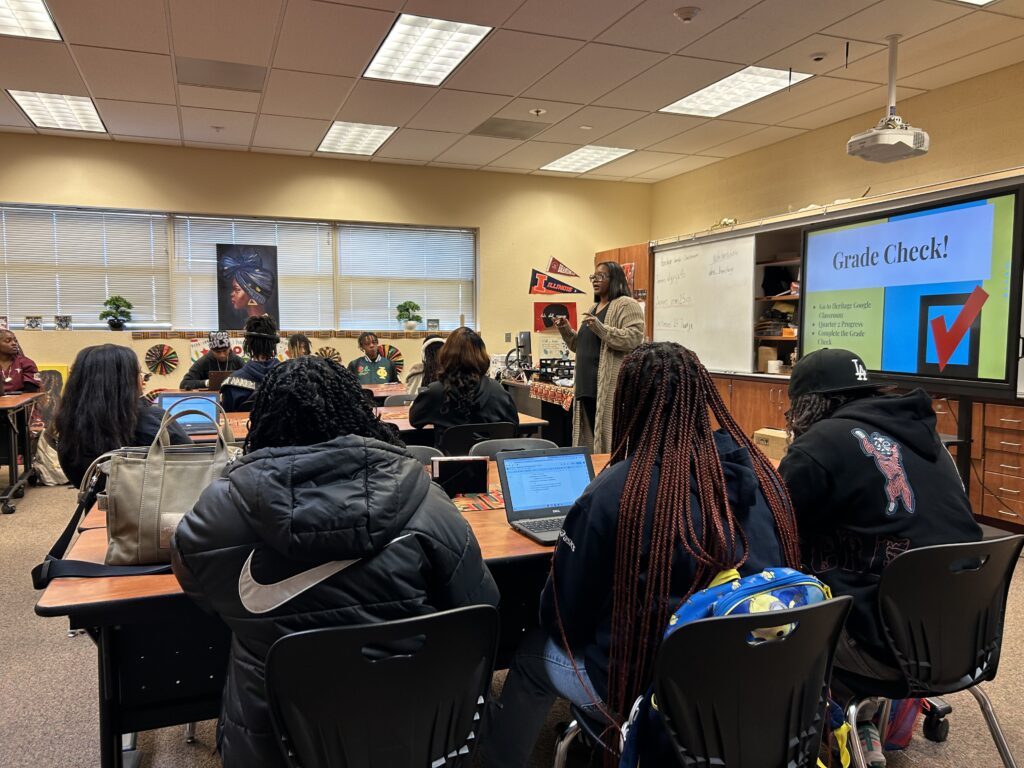
A San Jose Unified teacher attends a rally Oct. 9 to promote candidates and a school bond measure that includes funding for staff housing.
Credit: Photo courtesy of California Teachers Union
This past November, hundreds of California school districts pursued local bond dollars to fix or update campuses across their communities.
Voters passed 205 of 267 proposed local construction bonds on the Nov. 5 ballot, including 14 of 15 for community colleges. Along with the largest number of bonds, the 77% passage rate was just shy of the historic approval rate of 79% since 2000, said Michael Coleman, founder of CaliforniaCityFinance.com, who compiled the voting results.
That was the year voters lowered the threshold for passing school bonds from a two-thirds majority to 55%.
Voters in major urban areas were the most receptive to bond proposals, including Los Angeles Unified (LAUSD), whose $9 billion bond was by far the biggest on the ballot; $1.15 billion in San Jose Unified, which included money to underwrite staff housing; and $790 million in San Francisco Unified. San Diego Community College District’s $3.5 billion bond proposal was the largest community college measure.
The bond in Earlimart Elementary in Tulare County passed with the state’s highest approval of 81.6%. But in the if-only-we-had-knocked-on-more-doors category, bonds in Kingsburg Union High School District, spanning three Central Valley counties, and Elverta Joint Elementary District in Sacramento County, lost by only three votes, and in Weed Union School District, in Siskiyou County, by four votes.
Across the Central San Joaquin Valley, stretching from San Joaquin and Calaveras counties to Kern County, more than 40 measures were approved.
Enrollment is growing in some parts of the region, so voters decided on multimillion dollar measures to meet the demand, such as Clovis Unified’s $400 million bond and Sanger Unified’s $175 million measure. In both districts, 57.6% of voters said yes to meet the needs of their growing communities.
“We have emphasized that this bond measure is critical to keeping our schools in the great shape they are in today and to finishing the much-needed Clovis South High School,” Clovis Unified Superintendent Corrine Folmer said when voting results showed that the district’s bond measure had secured a win.
Clovis and Sanger Unified listed finishing construction at their high schools as priorities. Estimating its student population doubling in the next 10 to 20 years, Sanger Unified is also looking to build a new elementary school to alleviate overcrowding.
Other school communities in the Central Valley and up and down the state approved bond money to address the deteriorating condition of aging facilities. For instance, in Fresno Unified, 64.5% of voters said yes to a $500 million bond — the largest in district history.
In the nine-county San Francisco Bay Area, all districts but one, Vacaville Unified, passed bond measures. In Los Angeles County, only Saugus Union School District’s bond failed. In Orange County, all transitional kindergarten to grade 12 school district bond measures passed, but voters nixed Rancho Santiago Community College District’s bond.
However, voters in many predominantly rural and low-property-wealth districts, from Humboldt County in the north to Imperial County in the south, voted down bonds that would have raised taxes. This included eight small districts in San Diego County and Del Norte Unified in Del Norte County. In October, EdSource highlighted Del Norte’s struggle with mold-infested, leaky portables and hazardous playgrounds in a roundtable on Proposition 2, a statewide school construction bond that voters passed.
“Our one-district county is strained by a lack of economy, and the community is struggling with high tax rates. This wasn’t a lack of desire for our youth, but one based on meeting basic needs for household necessities,” said Brie Fraley, a parent of four boys and active bond supporter. “The structure of bonds in California doesn’t help the neediest communities.”
Nearly all parcel taxes pass
Along with construction bonds, 26 school districts placed annual parcel taxes on the ballot, and 24 passed. Parcel taxes are also property taxes, but they must be a uniform amount per property in a district — whether it’s assessed for a run-down home or a five-star hotel. Although it requires a two-thirds majority vote for approval, 92% of the parcel taxes passed in November; 17 of those renewed existing taxes.
Particularly popular in the Bay Area and coastal Los Angeles County, they ranged from $647 per parcel in Lakeside Union School District, a small rural district lying in both Santa Clara and Santa Cruz counties, and $369 per parcel in Woodside Elementary, near Palo Alto, to $59 per parcel in both Sunnyvale School District and Ventura Unified.





